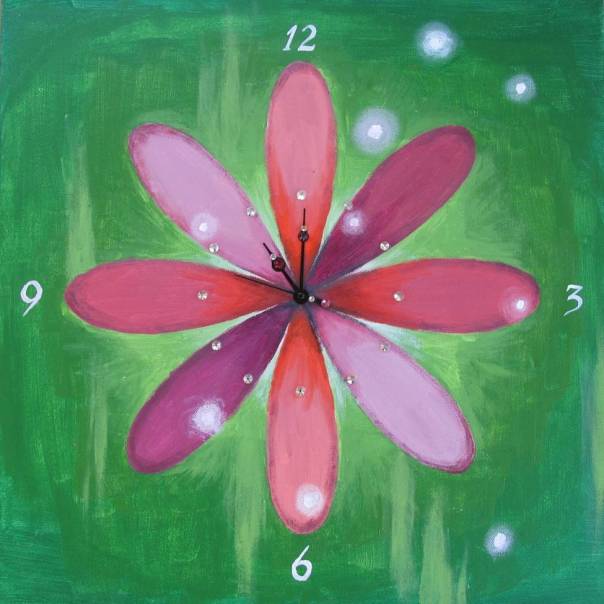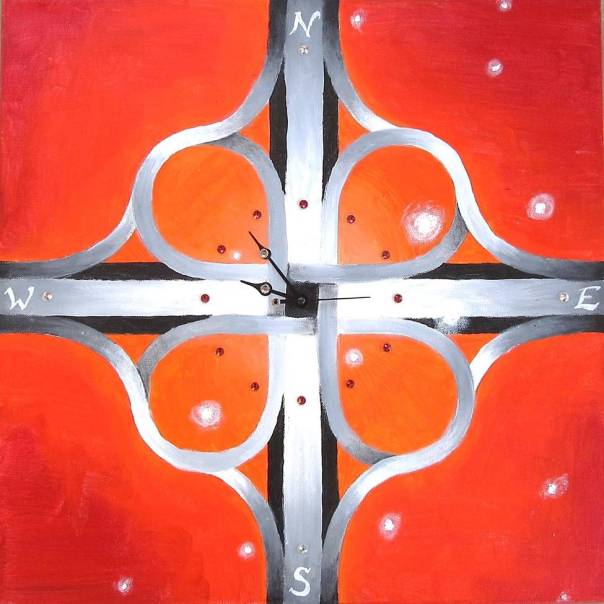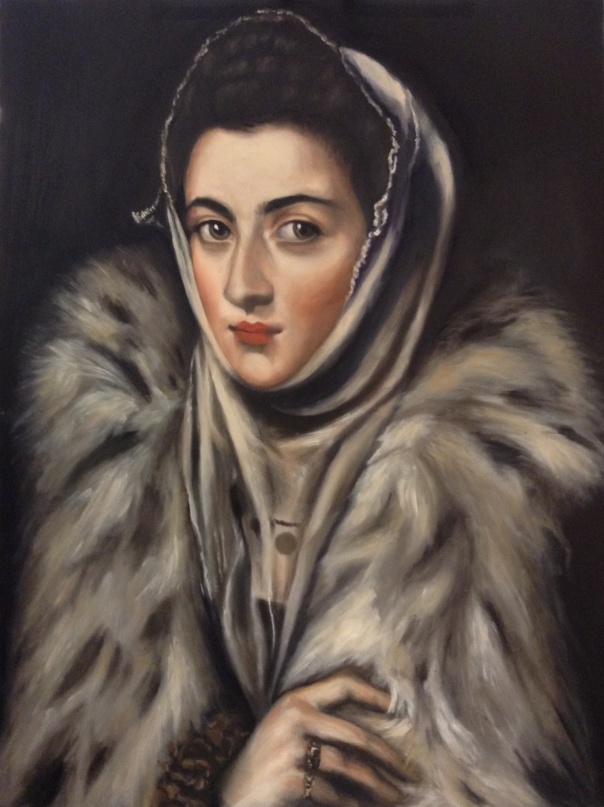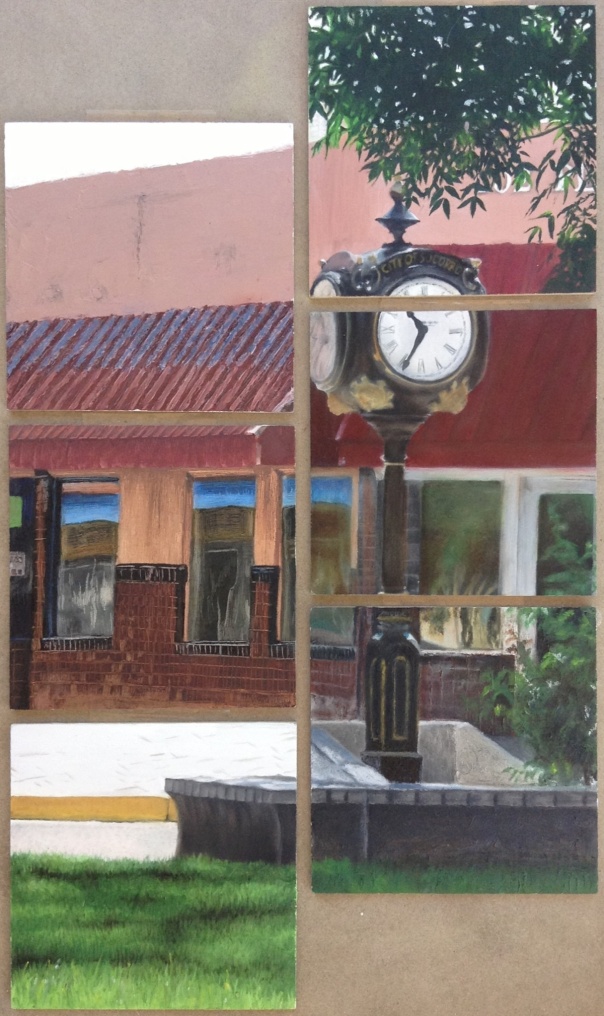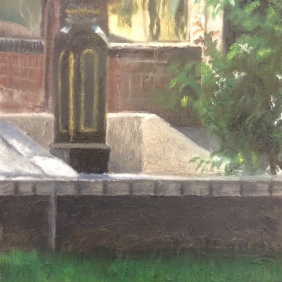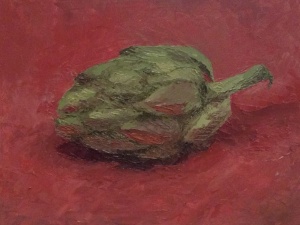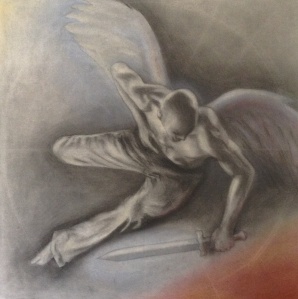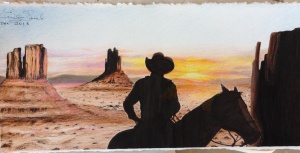Today, people generally tend to think of art as being at the opposite end of the spectrum from math & science. However, the two “sides” are actually quite related, even though modern thought has separated them. Think of it: at the time that St. Peter’s Basilica was built (1506-1625), artists were responsible for both fine arts and engineering. There was not such a cultural divide between the two. Michelangelo, Gian Lorenzo Bernini, and Carlo Maderno were among the handful of architects responsible for this immense and potentially dangerous structure.
Even now, if you choose to look for it, you can see how art has its ties with math and science. Fractals are a prime example. Pictured below is an example of the beauty that can be achieved through fractal art. If you’d like to learn more about fractals, I would highly recommend visiting the website for the Fractal Foundation, from which the graphic below was obtained.

Last year, as a part of my art studies, I completed a series of art that was inspired by my years studying engineering at New Mexico Tech. All of the ten (10) pieces are clocks set inside a stretched canvas, and each depicts one or more concepts from engineering, math, or science.
The first one that I completed is entitled Mohr’s Day in the Life. This piece is inspired by the concept that personal stress can be cyclical within a day. I determined the potential times for max & min social stress (tau), and max & min work stress (sigma), and used these–instead of engineering normal/shearing stress values–to build a Mohr’s circle. Then, I utilized a 24-hour clock (rather than a traditional 12-hour clock).
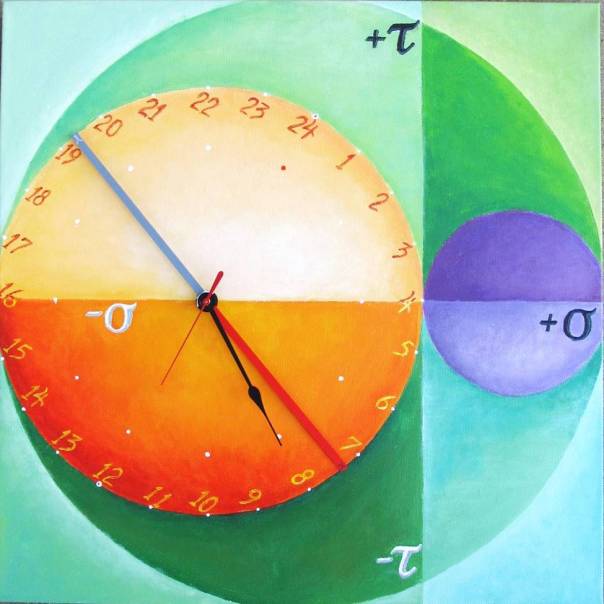
Mohr’s Day in the Life; acrylic on canvas, wood, & working 24-hour clock; 20″x20″; 2015.
The next piece in this series derives its shape from an infographic used to calculate the relationship between power, voltage, current, and resistance. Each of the four variables has three ways in which it is calculated, so there are twelve equations and twelve wedges to the wheel. Superimposed on these are twelve colors of the color wheel, and four quadrants that represent the four seasons. The “hour hand” is wheel-shaped, and rotates at the center of the clock.

Electric; acrylic on canvas, cardboard, Swarovski crystals, & working clock; 20″ x 20″; 2015
The next clock builds on the concept of stress & time, this time using a hypothetical diagram for Mohr’s criterion. The minute hand always stays within the “safe” area, even though it reaches the edge at two points.
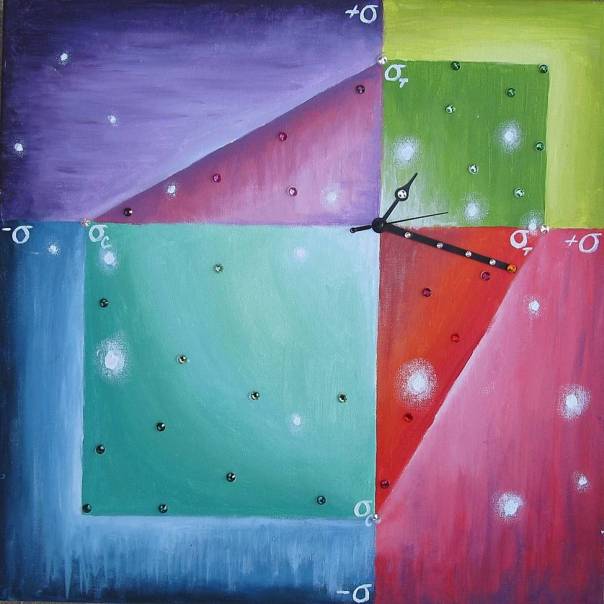

The next piece continues the use of magnetic field lines, this time with those of a bar magnet. It relates the concept of magnetic attraction with the concept of “attracting wealth” that is utilized by some self-help gurus. The magnetic bar in the painting is painted gold, so is also a “gold bar,” and crystals are placed at the hour points of the clock. The placement also switches the traditional emphasis on 12, or 12 and 6, as reference points, and focuses on 9 and 3 (9, specifically, as the start of the traditional “9 to 5” workday).
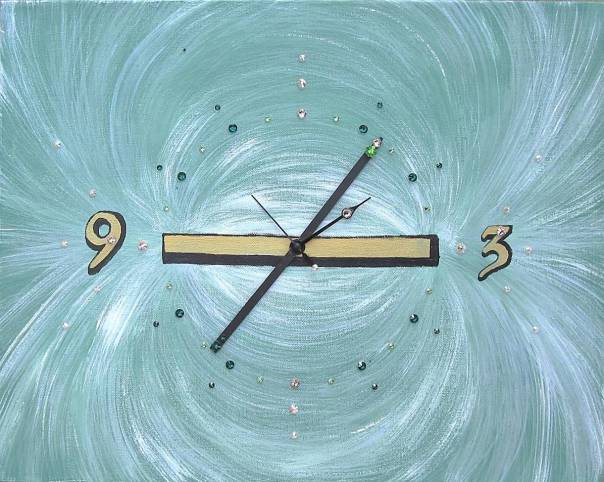
One of the beauties of the cyclical clock is that it blends quite perfectly with the polar coordinate system. The following piece features a polar coordinate shape known as a cardioid, so called because it is vaguely heart-shaped. In the real world, the 3-D rotational version of the cardioid is present in sound technology. It is the shape of what a traditional microphone “hears” when it is at the origin of the coordinate system.
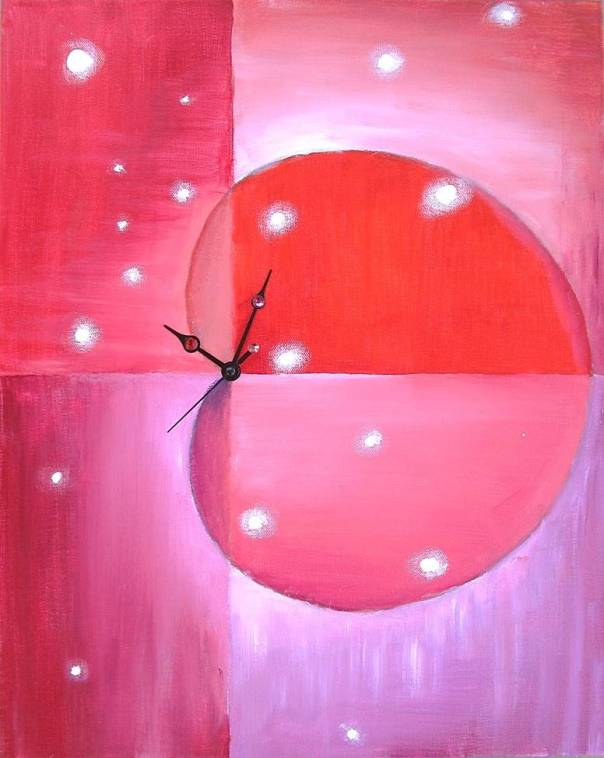
Another polar coordinate shape is the lemniscate, also known as the infinity sign. Day and night skies are featured on both the top and the bottom of this next clock, which can be configured in this position, or rearranged to be hung upside-down.


